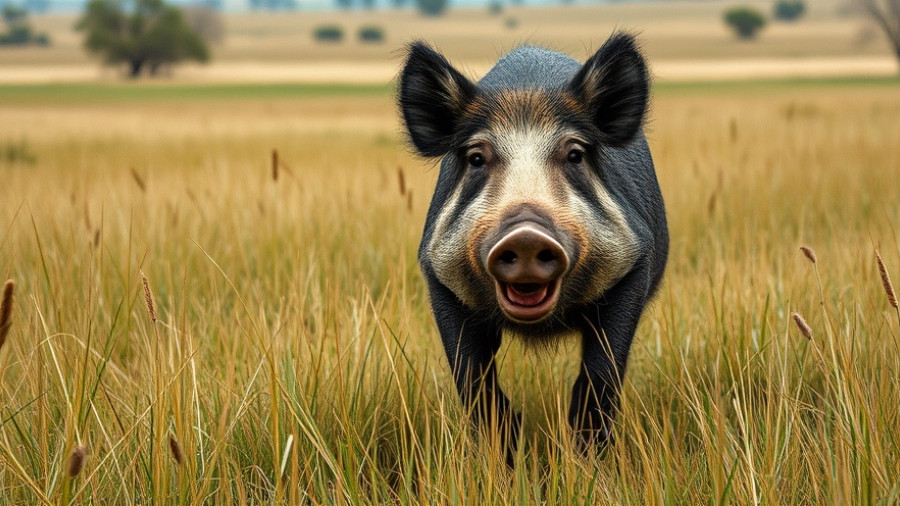
Understanding the Wild Hog Invasion
In recent years, wild hogs have emerged as a significant problem in many rural areas, disrupting local ecosystems and agriculture. These invasive species, known for their aggressive feeding habits, can destroy crops and compete with native wildlife for resources. With their rapid reproduction rates, it’s no surprise that towns like mine are mobilizing to defend against these unwelcome visitors. Understanding the implications of a wild hog invasion can enhance how we approach rodent management, both for the sake of local wildlife and agriculture.
In 'Defending my town against invasive wild hogs,' the discussion emphasizes the threat these animals pose, sparking a deeper look into their effects on local fishing and wildlife preservation.
The Ripple Effect on Local Ecosystems
When wild hogs invade an area, they don’t just cause havoc; they create a diabolical cycle that affects many different aspects of the environment. For instance, the hogs dig up soil in search of food, ultimately altering habitats for other species. This disruption presents risks to local fish populations by destabilizing waterways. Fishermen might notice a decrease in the availability of fish—which can diminish their catch rates—as natural food chains are interrupted by wild hog activity.
Contributions of Local Hunters
Local hunters play a crucial role in mitigating the wild hog problem. By taking action, they help to manage the population, which can lead to healthier ecosystems. Beyond their assistance in controlling the hog numbers, hunters often use the opportunity to connect with nature, experience adventure, and even reel in fresh game. Not only do they keep the hogs in check, but they also contribute to community traditions surrounding hunting and fishing.
Benefits of Informed Hunting Strategies
Implementing informed hunting practices can also keep fishermen engaged with nature while addressing the wild hog issue. Understanding how hogs interact with local wildlife can lead to more strategic hunting. A large part of successful hunting depends on knowing the right baits, timing, and locations—skills that can translate well for fishermen seeking to catch bullfrogs, turtles, or even plan a crawfish netting expedition. Utilizing recipes that integrate wild hog meat with local fish species could not only provide a new culinary experience but also foster a sense of community among those who enjoy outdoor activities.
Fishing as a Community Bonding Experience
A significant aspect of being a fisherman isn't merely the act of fishing; it's about the connections formed with fellow enthusiasts. Just as hunters gather for their outings, fishermen often find joy in shared experiences. Whether it's waiting patiently for a catch on a quiet lake or discussing the best bait to use, these moments bond community members. Moreover, by addressing the prevalence of wild hogs together, towns can unite in prioritizing the preservation of local environments and promoting sustainable fishing practices.
What’s Next?
As the conversation around wild hogs continues to develop, it’s crucial that the community participates and educates itself on the impacts. From the perspective of tackling the wild hog invasion to enhancing the fishing experience, understanding the broader implications strengthens our resolve. Taking decisive action works in favor of both fishermen and wildlife alike.
 Add Row
Add Row  Add
Add 




Write A Comment